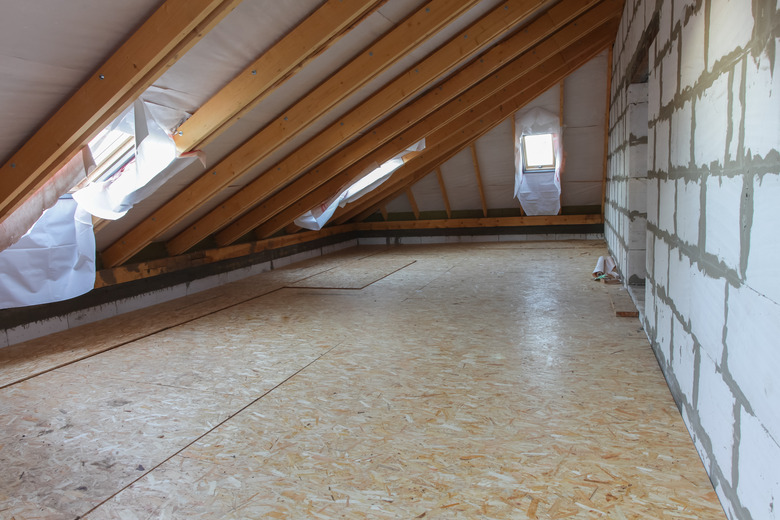Painting Chipboard Floors
We may receive a commission on purchases made from links.
Chipboard, also called particleboard, has many useful applications, but flooring is not one of them. Some manufacturers do like to tout chipboard as a good choice for flooring, but it is susceptible to moisture and is not as strong as medium-density fiberboard (MDF) or plywood, which are better choices for flooring. If you do have floors made of chipboard, however, you can protect and improve them by painting them. The best floor paint for chipboard is a glossy floor paint over a good-quality primer.
What Is Chipboard?
What Is Chipboard?
Chipboard is comprised of pressed fibers of 100 percent recycled paper. You might find it as a backing in a picture frame or in thicker pieces used as the backside of a bookshelf or in cabinets. It is manufactured in several different thickness for a wide range of applications.
Both sides are smooth and shiny. When used as flooring, it is thicker and usually made by bonding small pieces of wood together instead of paper. It is less expensive than plywood or MDF.
Preparing to Paint
Preparing to Paint
The main thing to know about painting chipboard is that it is a porous material that will soak up moisture. For this reason, never start with a water-based primer, as it will cause the material to swell; instead, use an acrylic-based primer. Further, the surface is shiny and smooth, which may make it difficult for the paint to adhere. Some experts recommend sanding the surface lightly just to scuff it up enough that the paint will go on. Others posit that chipboard should never be sanded at all. The take-home point, though, is that getting the paint to stick is a challenge.
You might try a very fine-grit sandpaper and just go over the surface very lightly. If you try this, be careful to retain the top layer of the laminate. Otherwise, just clean the floor well with a slightly damp cloth, taking care to avoid overwetting the surface. Let it dry completely before starting to paint. Paint will not adhere to greasy or dirty chipboard, so this step is important.
Painting Your Chipboard Floor
Painting Your Chipboard Floor
Start with your primer, which will create a protective barrier not only to protect the floor in the long run but to create a good painting surface for the final coat. Acrylic primer is recommended not only over a latex or water-based primer but also over an oil-based primer, both of which will soak into the chipboard.
Don rubber gloves and then apply the primer thinly and evenly. Make sure the paint dries thoroughly. Next, paint over the primer with an acrylic-based floor paint in a satin finish. The satin finish is a happy medium that will avoid both the high sheen and slippery aspect of a glossy paint and the dull look and feel of a matte or eggshell finish.
After you finish painting, seal the floor with a coat of clear sealant. This will protect the paint and give it a professional, smooth appearance.
